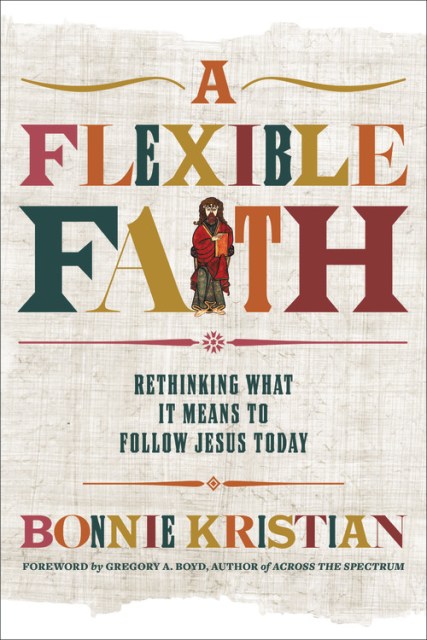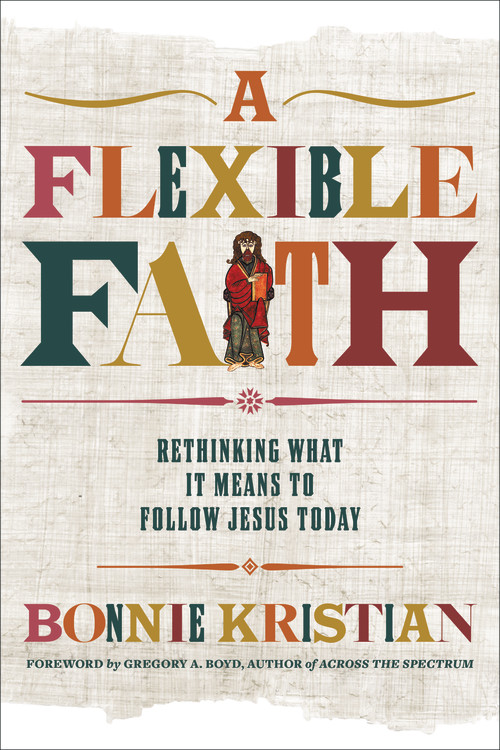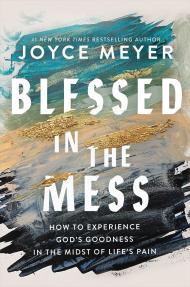Promotion
25% off sitewide. Make sure to order by 11:59am, 12/12 for holiday delivery! Code BEST25 automatically applied at checkout!
By clicking “Accept,” you agree to the use of cookies and similar technologies on your device as set forth in our Cookie Policy and our Privacy Policy. Please note that certain cookies are essential for this website to function properly and do not require user consent to be deployed.
A Flexible Faith
Rethinking What It Means to Follow Jesus Today
Contributors
Foreword by Dr. Gregory A. Boyd
Formats and Prices
- On Sale
- May 15, 2018
- Page Count
- 272 pages
- Publisher
- FaithWords
- ISBN-13
- 9781478992097
Price
$19.99Price
$25.99 CADFormat
Format:
- Trade Paperback $19.99 $25.99 CAD
- ebook $9.99 $12.99 CAD
This item is a preorder. Your payment method will be charged immediately, and the product is expected to ship on or around May 15, 2018. This date is subject to change due to shipping delays beyond our control.
Buy from Other Retailers:
It is all too easy to fail to grasp the diversity of the Christian faith-especially for those who have grown up in one branch of the church and never explored another. We fail to realize how many ways there are to follow Jesus, convinced that our own tradition is the one Christian alternative to nonbelief.
A FLEXIBLE FAITH is written for the convinced and confused believer alike. It is a readable exploration of the lively theological diversity that stretches back through church history and across the spectrum of Christianity today. It is an easy introduction to how Christians have historically answered key questions about what it means to follow Jesus. Chapters will include 17 big theological questions and answers; profiles of relevant figures in church history; discussion questions; single-page Q&As-profiles of more unusual types of Christians (e.g., a Catholic nun or a member of an Amish community); and a guide to major Christian denominations today.
As Bonnie shares her wrestlings with core issues-such as who Jesus is, what place the Church has in our lives, how to disagree yet remain within a community, and how to love the Bible for what it actually is-she teaches us how to walk courageously through our own tough questions.
Following Jesus is big and it is something that individual believers, movements, and denominations have expressed in uncountably different ways over the centuries. In the process of helping us sort things out, Bonnie shows us how to be comfortable with diversity in the Body. And as we learn to hold questions in one hand and answers in the other, we will discover new depths of faith that will remain secure even through the storms of life.
-
"Many thoughtful Christians I know struggle to articulate what they believe, how they came to believe it, and what traction that belief has in their lives. I am now delighted to be able to hand these friends A FLEXIBLE FAITH. Offering valuable perspectives from across centuries and cultures, Bonnie Kristian makes theology accessible, meaningful, and relevant to readers."Margot Starbuck, author of Small Things With Great Love
-
"Diversity of beliefs and perspectives has characterized the Christian faith from early on. And yet, at the same time, the person of Jesus and a basic set of core beliefs have brought unity to this diversity. In A FLEXIBLE FAITH, Bonnie Kristian provides a very helpful roadmap for navigating this diversity at a number of key points. Her discussions of the various viewpoints are clear, balanced, and winsome. Highly recommended."Paul Eddy, pastor, professor of biblical and theological studies at Bethel University, and author of Across the Spectrum: Understanding Issues in Evangelical Theology
-
"A FLEXIBLE FAITH is a necessary and powerful exploration of the many perspectives and possibilities contained within Christian orthodoxy. At a time of sharp decline for American Christianity, Bonnie Kristian's work offers hope: that both church history and contemporary practice offer more than just the religious options we grew up with or see plastered across our newsfeeds. With journalistic precision and experiential insight, Kristian masterfully maps a way forward-by calling us back to our beautiful Christian story."Zach Hoag, author of The Light is Winning: Why Religion Just Might Bring Us Back to Life
-
"Any book that compares Christianity and its beliefs to a series of concentric circles with Jesus as the center of all circles not only has my attention but gets it right. A FLEXIBLE FAITH works from that Jesus center through the various levels of consensus and then to disagreements at the periphery with admirable clarity, fresh perspectives, and compelling conviction. This book will serve churches well if they want to introduce Christians to Christian theology but do so in a way that celebrates both where we agree and where we differ."Scot McKnight, Julius R. Mantey Professor in New Testament, Northern Seminary and author of The Blue Parakeet: Rethinking How You Read the Bible
-
"What a terrific service Bonnie Kristian has provided! With her A FLEXIBLE FAITH, anyone who is curious about the contemporary Christian Church will find clear guidance regarding beliefs and practices, enabling that person to make thoughtful decisions along their spiritual journey. As a longtime pastor and teacher, I eagerly recommend A Flexible Faith and can see myself inviting people-especially millennials-to read and reflect on the book."Dennis R. Edwards, senior pastor of The Sanctuary Covenant Church and affiliate professor at Northern Seminary
-
"In a culture that increasingly asks us to draw lines in the sand, A FLEXIBLE FAITH is a timely reminder that the church has always made space for disagreement and debate on many matters of belief and practice. Bonnie Kristian has created a thought-provoking guide to cultivating diversity instead of division. This is an eminently practical resource for the believers, seekers, and the spiritually skeptical."Jonathan Merritt, author of Learning to Speak God from Scratch
-
"As Christianity becomes more polarized, there's a deep need for bridge builders and spiritual companions, people who can create space for followers of Jesus that help us honor a wide range of beliefs and practices and find ourselves in the story, here and now. In A FLEXIBLE FAITH, Bonnie Kristian offers not only real stories, practical resources, and points for discussion, but she also highlights the beautiful textures of diversity within our faith that will be healing and hopeful to many."Kathy Escobar, co-pastor at The Refuge and author of Faith Shift: Finding Your Way Forward When Everything you Believe Is Coming Apart
Newsletter Signup
By clicking ‘Sign Up,’ I acknowledge that I have read and agree to Hachette Book Group’s Privacy Policy and Terms of Use






